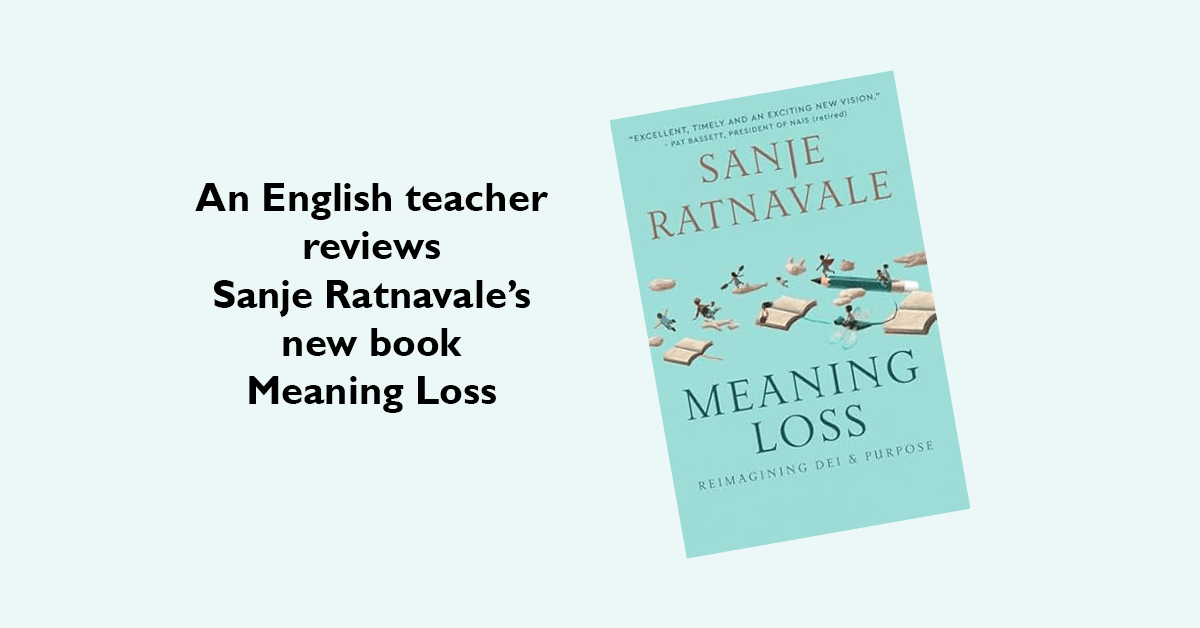October 1, 2024
President of the OESIS Network, Sanje Ratnavale, begins his contribution to the ongoing debates about the place of DEI at independent schools with two anecdotes. That both of his interlocutors have chosen to remain anonymous is perhaps itself a sign of crisis. One veteran teacher tries, and fails to open up a discussion about a new policy mandating that teachers not disclose gender transitions to parents when students ask that they refrain from doing so. Another experienced teacher lamented the “thought-terminating cliches” (Amanda Montell’s term) that facilitated a wholesale revision of her history curriculum in light of critical theory. Given the “hard turn…towards Social Justice” after the murder of George Floyd that led to what Ratnavale labels “lazy” implementation of DEI at many schools, there are no shortage of examples of DEI blow-ups.
How did we get here?
Ratnavale attributes the current crisis in DEI to our failure to resolve or even identify potential conflicts between curricular models. He traces the history of four models: Scholar Academic (with its focus on scholarly content), Social Efficiency (with its focus on economically useful skills), Learner-Centered (with its focus on student needs, interests and desires) and Social Justice (with its focus on inducing social change). The Scholar Academic and Social Justice models are primarily preoccupied with curricular content while the Social Efficiency and Learner-Centered are primarily concerned with curricular skills. While Ratnavale acknowledges a place for all these models in schools, a poorly conceived or hastily implemented curriculum can invite any number of conflicts. As it happens many DEI programs have been both poorly conceived and poorly implemented.
DEI programs emerged out of the Social Justice paradigm and so are almost entirely concerned with content: what should we believe about pressing social issues. Such a concern naturally puts DEI in tension with the Scholar Academic model with its own notions about what information and knowledge should be passed on to students. But, with its suspicious attitude towards capitalism, DEI sits poorly with the business-friendly Social Efficiency model. And, with its deeply skeptical view of the student, conditioned as he or she is by all manner of biases, structural impairments and unearned privileges, DEI sits very uneasily with the Learner-Centered model. In his fascinating historical excursus, Ratnavale reveals how this last conflict was anticipated by George Counts’ speech, “Dare the School Build a New Social Order” at the 1932 meeting of the Progressive Education Association.
The conflicts are apparent enough. So, why has DEI been so widely and so poorly implemented? Ratnavale calls out the “modular and standardized” and “top down” approach to curriculum change at most schools. School leaders purchase the latest curriculum or hire the most cutting edge speakers and consultants and set aside time to put students and teachers through content heavy instruction. Money and time spent become easy signalizers to school constituencies that this school takes DEI seriously and all is well—until the next culture war blow-up, when the process is repeated. Boards now operate at such a historically unprecedented distance from the schools they oversee that they are poorly placed to question the astonishing consensus–born no doubt of the seeming political homogeneity that obtains among educators—that has led to such a widespread cultural project. It should be noted that one of the major responsibilities of private sector boards is the vetting of potential CEO conflicts of interest. Given the administration to school association to DEI consultant pipeline, boards would do well to scrutinize the outside vendors brought in to deliver these programs.
In a memorable image, Ratnavale asserts that “Curriculum innovation is not like strapping orthopedic devices on a broken limb. Rather, it is like introducing a new medication, affecting every organ of the school.” In other words, meaningful DEI needs to happen where school happens. Teachers need to be partners in this project, not subjects for (re)education. Ratnavale’s data show that most educators favor Learner-Centered strategies even as many also favor the Social Justice model. This seems to offer a way out. With its focus on empowering the student and imparting skills (as opposed to content), the Learner-Centered model would indicate a focus on imparting the skills we need to thrive in a pluralist environment rather than drilling the knowledge or language that performs cultural competence.
Such a model might even have the virtue of being the right one. If we see our students—all of them—we already know that the Social Justice approach to DEI is actually hindering our students from showing up fully in our schools. I’m thinking in particular of three students for whom I served as dean. One was from a traditional Muslim family; the other two were evangelical Christians. They understood that there was no place for their understanding of gender or sexuality at our school. Indeed, they knew that some of the fundamental teachings of their faiths were seen, simply, as “hate.” As an openly gay man (how I loathe that locution, such an artifact of our age) I am happy to say I was and remain unharmed by their views. I get it. I’m an adult. Sadly, my gay students do not have the opportunity to develop the confidence and curiosity to engage with these views held (let us remember!) by a significant minority of our fellow Americans. Let’s start the skills conversation.
Ratnavale is inviting us to that important conversation. Read his book! But, given that tuition has outpaced inflation for decades now, given the decline in the birthrate, and given exploding healthcare costs, even the wealthiest independent schools will sooner or later come under severe financial pressure. When that time comes, many of the “orthopedic” adjuncts to our curricula will be discarded as our schools refocus on the essentials. When the consultants, speakers and perhaps entire bureaucracies go away, who will continue the work? Ratnavale is giving us an opportunity to refocus before circumstances force our hand.
Meaning Loss: Reimagining DEI & Purpose is available on Amazon.

